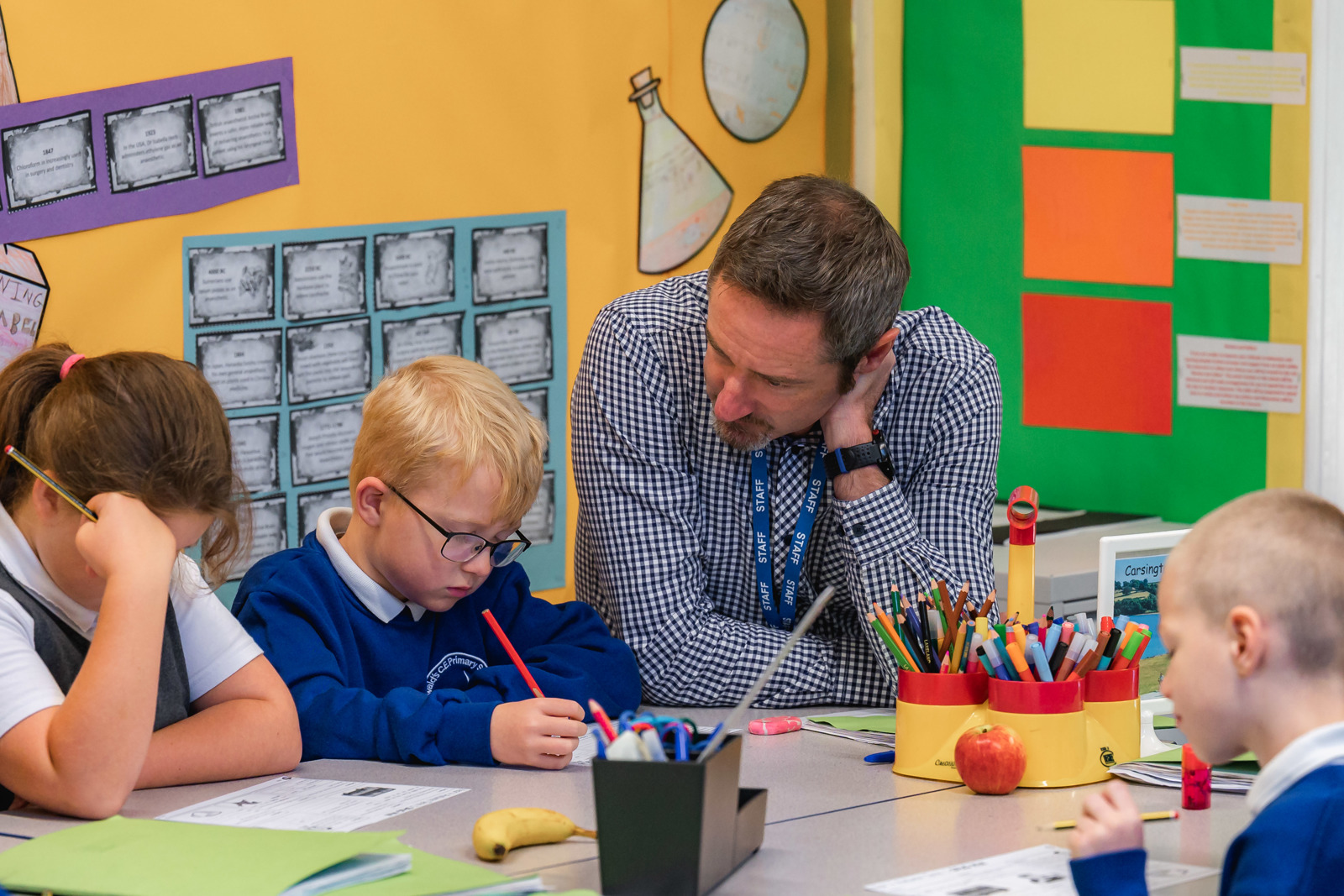Writing


Writing is a vital life skill. It is often the way judgements are made about an individual, e.g. their academic achievements, a job application and when they communicate through letter. Even though there are ever-increasing mediums for written communication, e.g. text, email etc. It is still necessary for children to be able to communicate using a good standard of written English.
We hope that by teaching the children at St. Oswald's School to write at, at least age appropriate levels they will have the skills to be able:
- To understand the importance and purpose of formal and informal written language;
- To communicate in standard written form;
- To express themselves creatively and encourage reflection about the content of their work;
- To organise their thoughts and ideas logically that are appropriate for their intended audience.
Characteristics of a Writer at St Oswald's
- The ability to write fluently and with interesting detail on a number of topics throughout the curriculum.
- A vivid imagination which makes readers engage with and enjoy their writing.
- A highly developed vocabulary and an excellent knowledge of writing techniques to extend details or description.
- Well-organised and structured writing, which includes a variety of sentence structures.
- Excellent transcription skills that ensure their writing is well presented and punctuated, spelt correctly and neat.
- A love of writing and an appreciation of its educational, cultural and entertainment values.
There are many and varied opportunities for the teaching of writing skills across the St. Oswald's curriculum. These include:
Small world play is widely used throughout school as a stimulus for writing. Emergent writing, which can be seen clearly in EYFS and is a key feature in Year 1 unites each of the elements of English; speaking and listening, reading and writing, and making explicit links between these.
The teaching of spelling is in line with the English National Curriculum including the learning of daily spellings (Years 2-6) using elements of the No Nonsense Spelling lessons where appropriate, understanding how to and being able to use a dictionary; the highlighting and use of subject-specific language; and use of children’s individual spelling journals. Spellings are learnt within the SPAG lessons within school and are taught explicitly.
The teaching of grammar in line with the English National Curriculum,
The teaching of punctuation in line with the English National Curriculum ensures that the use of appropriate punctuation is insisted upon across the whole curriculum when a written response is required from the children.
The daily modelling of handwriting and regular teaching of it in English related sessions and across the full curriculum (using cursive script from Year 2 once letter formation has been established).
Each year group uses an appropriate writing toolkit for the ‘WALT’ (We Are Learning To) or L.O (‘Learning objective') in every lesson and uses symbols in the 'WILF' (What I'm Looking For) to show children what they should be including in their writing. These are clear success criteria.
So what does writing look like at St Oswald's?
Planning Formats
The School uses elements of Talk for Writing alongside the English National Curriculum for long term planning, to support staff in planning, delivering and assessing the learning and teaching of English. Teaching staff use appropriate age objectives to draw up their medium and short-term plans.
Each teacher finds an appropriate ‘hook’ for writing within the text-based learning and individual lessons that are taught which will engage, motivate and provide the children with a real purpose and audience for their writing and ensure that the children have experiences of writing different genres.
The children participate in shared writing, modelled writing and guided writing within English sessions and other curriculum areas as appropriate. To end each block of writing, the children complete an independent 'hot write’, which is marked with three stars and 2 next steps. From this, children can see what they do well and what they need to improve upon. This then informs teachers about planning for the next teaching cycle. Children’s next steps are indicated by using the next steps stamp and appropriate symbol. These next steps also help to determine each child’s individual writing target, which is referred to and used as a self-assessment tool by the child, and their peers, at the end of, and during, each writing session.
Children plan their writing using story mountains, 'boxing up' and also create story boxes (as inspired by the Helen Bromley 'Stir Up a Story' approach.) Teaching children the difference between standard and non-standard forms of written English and when each of these can be appropriately used.
Resources
English resources are used by children and staff in many ways, including;
a) Demonstration or modelling skills through using a range of differing genres,
b) Enabling children to write through using a range of visual and real life situations, having the opportunity to write for different purposes,
c) Providing a context for the application and skills in reading through a range of texts.
Whole school resources include; the cursive handwriting scheme and support material which is used in conjunction with visualisers.
Classroom resources include; class sets of dictionaries and thesauruses at age and level of ability.
